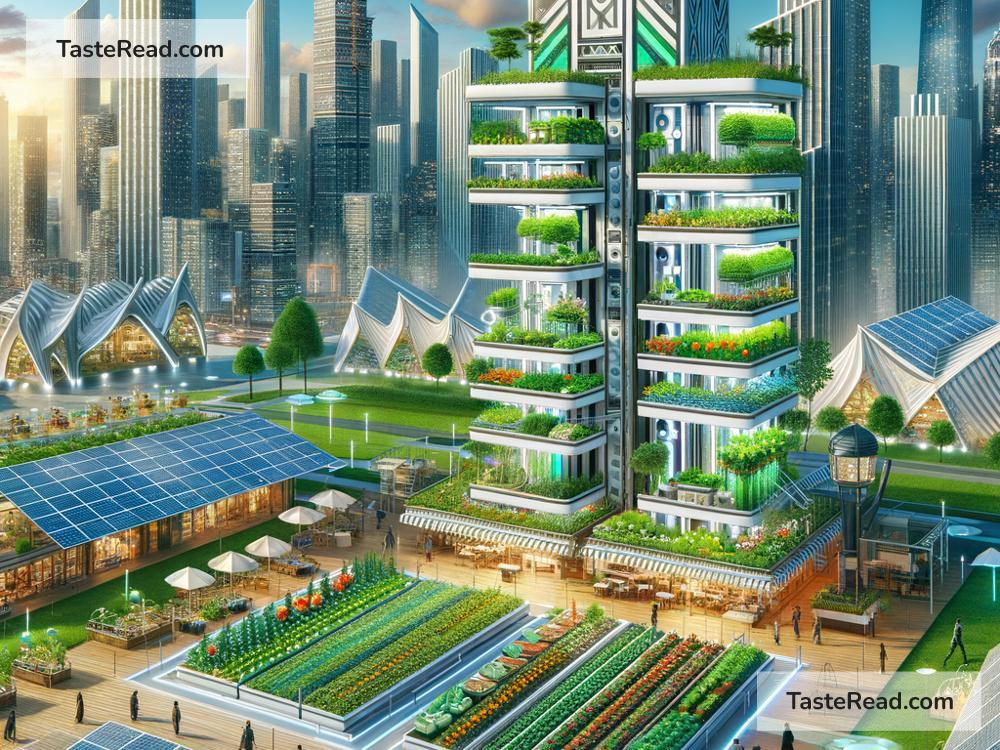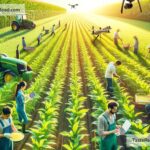The Future of Urban Farming: Growing Food in the Heart of Cities
As cities around the world grow bigger, there’s a big question we need to answer: How will we feed everyone in the future? Urban farming, the practice of growing food in cities, is becoming more and more popular as a solution. It’s a creative way to transform rooftops, empty lots, and even skyscrapers into spaces for growing vegetables, fruits, and other crops. Let’s explore the future of urban farming and how it’s reshaping how we think about food, cities, and sustainability.
What Is Urban Farming?
Urban farming is all about growing food in or near cities, instead of relying on farms in faraway countryside. It can happen in many places, like on rooftops, in warehouses, or in backyards. Unlike traditional farming, urban farming finds innovative ways to grow crops within limited spaces and using modern technologies.
Some common types of urban farms include:
- Rooftop gardens: Vegetables and plants are grown on building roofs, using natural sunlight.
- Vertical farms: Food is grown in stacks within buildings, maximizing space.
- Community gardens: Groups of people grow food together in shared spaces.
- Hydroponics and aquaponics: Plants are grown without soil, using nutrient-rich water instead. Aquaponics even combines fish farming with crop production.
Why Urban Farming is Important
Urban farming isn’t just about fresh produce—it addresses several big challenges that cities face today:
-
Feeding a Growing Population
By 2050, experts predict that two-thirds of the world’s population will live in cities. That’s a lot of mouths to feed! Urban farming can help produce food closer to where people live, reducing the need to transport food from rural areas and cutting down on greenhouse gas emissions. -
Making Cities Greener
Imagine a city where every rooftop is covered in lush green plants. Urban farming doesn’t just grow food—it helps cool buildings, improve air quality, and increase biodiversity. This makes cities healthier places to live. -
Reducing Food Waste
A lot of food is wasted during transportation, storage, and delivery. Urban farming produces food locally, which means fewer losses and fresher options for people. -
Producing Food Sustainably
Traditional farming can harm the environment, using lots of space, water, and chemicals. Urban farming often relies on sustainable techniques like hydroponics, which use far less water, or renewable energy sources like solar power. -
Building Strong Communities
Urban farms create spaces where people come together to grow food, share knowledge, and connect. Community gardens, for example, help people work as a team while enjoying fresh, healthy food.
The Role of Technology
Technology is pushing urban farming to the next level. In the future, farms could become even more efficient, thanks to new tools like:
- Robotics and Automation: Robots can plant, water, and harvest crops. This helps farmers save time and ensures that plants are cared for consistently.
- Artificial Intelligence (AI): AI can monitor plant growth, predict disease outbreaks, and suggest the best times to water or harvest.
- Sensors and Smart Systems: Sensors in urban farms can track temperature, humidity, and nutrient levels to ensure ideal growing conditions for crops.
- LED Grow Lights: Indoor farms use LED lights to grow food even in places without sunlight. Modern lights are energy-efficient and allow plants to flourish all year round.
These cutting-edge tools make urban farming easier, faster, and more productive, particularly as cities become more crowded.
Challenges Urban Farming Must Overcome
While urban farming sounds incredible, it’s not without hurdles:
-
High Costs: Setting up systems like vertical farms or hydroponics can be expensive. However, as technology advances, prices are likely to fall.
-
Space Limitations: Cities are crowded, and finding enough space for farming can be tricky. Creative solutions such as converting abandoned buildings into farms or using underground spaces might help.
-
Climate Impacts: Even in cities, extreme weather or pollution can make farming difficult. Urban farmers will need to adapt to these conditions with resilient and sustainable practices.
-
Knowledge and Training: Not everyone knows how to farm, especially in cities. Schools, governments, and organizations need to educate people in urban agriculture methods.
How Urban Farming Is Already Changing Cities
In many places, urban farming is already making a difference:
- Singapore: This city-state is a global leader in urban farming. Its rooftop gardens and vertical farms produce fresh vegetables for city residents.
- New York City: Community gardens in neighborhoods give people the chance to grow food locally. Projects like the Brooklyn Grange rooftop farm lead the way in sustainable urban farming.
- Tokyo: High-tech vertical farms are producing lettuces year-round, using energy-efficient systems.
- Amsterdam: Aquaponics systems combine fish and plant farming, creating sustainable food production.
These success stories show the promise of urban farming for cities around the world.
The Future of Urban Farming
As the world changes, urban farming will become a major part of how we live. In the future, it’s possible that every city will have farms integrated into apartments, office buildings, schools, and hospitals. Farms could be powered by renewable energy, built into underground tunnels, or floating on water.
Urban farming marks a shift toward healthier, greener, and stronger cities. It shows how we can use creativity and technology to solve big problems like food security and climate change. As cities keep growing, urban farming will help ensure that everyone has access to fresh and nutritious food—right in the heart of the city.
So next time you walk through your neighborhood, imagine what it would look like with vegetables growing on rooftops or strawberries growing on building walls. The future of urban farming is exciting, and it’s closer than we might think.


